Collection: Eubena Nampitjin
-
Eubena Nampitjin 1030 mm x 1300 mm
CODE : 9118Vendor:Eubena NampitjinRegular price $15,500.00 AUDRegular priceUnit price / per -
Eubena Nampitjin 1200 mm x 2500 mm
CODE : 9119Vendor:Eubena NampitjinRegular price $25,500.00 AUDRegular priceUnit price / per -
Eubena 1080 mm x 1300 mm
CODE : 9117Vendor:Eubena NampitjinRegular price $14,500.00 AUDRegular priceUnit price / per -
Eubena Nampitjin 760 mm x 2040 mm
CODE : 718Vendor:Eubena NampitjinRegular price $16,900.00 AUDRegular priceUnit price / per -
Eubena Nampitjin 600 mm x 1180 mm
CODE : 290Vendor:Eubena NampitjinRegular price $9,800.00 AUDRegular priceUnit price / per -
Eubina Nampitjin 960 mm x 1300 mm
CODE : 288Vendor:Eubena NampitjinRegular price $12,900.00 AUDRegular priceUnit price / per -
Eubena Nampitjin 620 mm x 1270 mm
CODE : 314Vendor:Eubena NampitjinRegular price $9,800.00 AUDRegular priceUnit price / per -
Eubena Nampitjin 620 mm x 1270 mm
CODE : 313Vendor:Eubena NampitjinRegular price $6,900.00 AUDRegular priceUnit price / per$9,800.00 AUDSale price $6,900.00 AUDSale
Eubena Nampitjin
Eubena Nampitjin was one of Australia’s leading Aboriginal artists. She was famous for her bright paintings, which reflected her spirituality and understanding of the Country and lore of the Great Sandy Desert. Her career was responsible for one of the largest strands of contemporary Australian art, the Balgo art movement, although her life history documented the changes in the living conditions of the Aboriginal people in the twentieth century.
Early Life and Upbringing
Eubena (Yupinya or Yupinya Nampitjin) was born in 1921 near Well 33 in the Canning Stock Route in WA, Australia. Her traditional life consisted of leading a nomadic lifestyle with her family. Her early years were spent learning the ancient traditions of her people, the Wangkajunga, in the Great Sandy Desert region. Like many women of her age, she met very few European settlers when growing up and retained many cultural and spiritual traditions.
After the Second World War, Eubena, her husband Mami, and her children relocated to the catholic mission at Balgo also known as Wirrimanu Western Australia. This was to be a major centre for aboriginal art and Eubena would have a role to play in the advancement of the art industry. The mission period marked a time of significant cultural adaptation, as traditional practices met Western influences. She did not let the mission relieve her of deep cultural understandings and feelings towards the land, what Aboriginal people call ‘Country’.
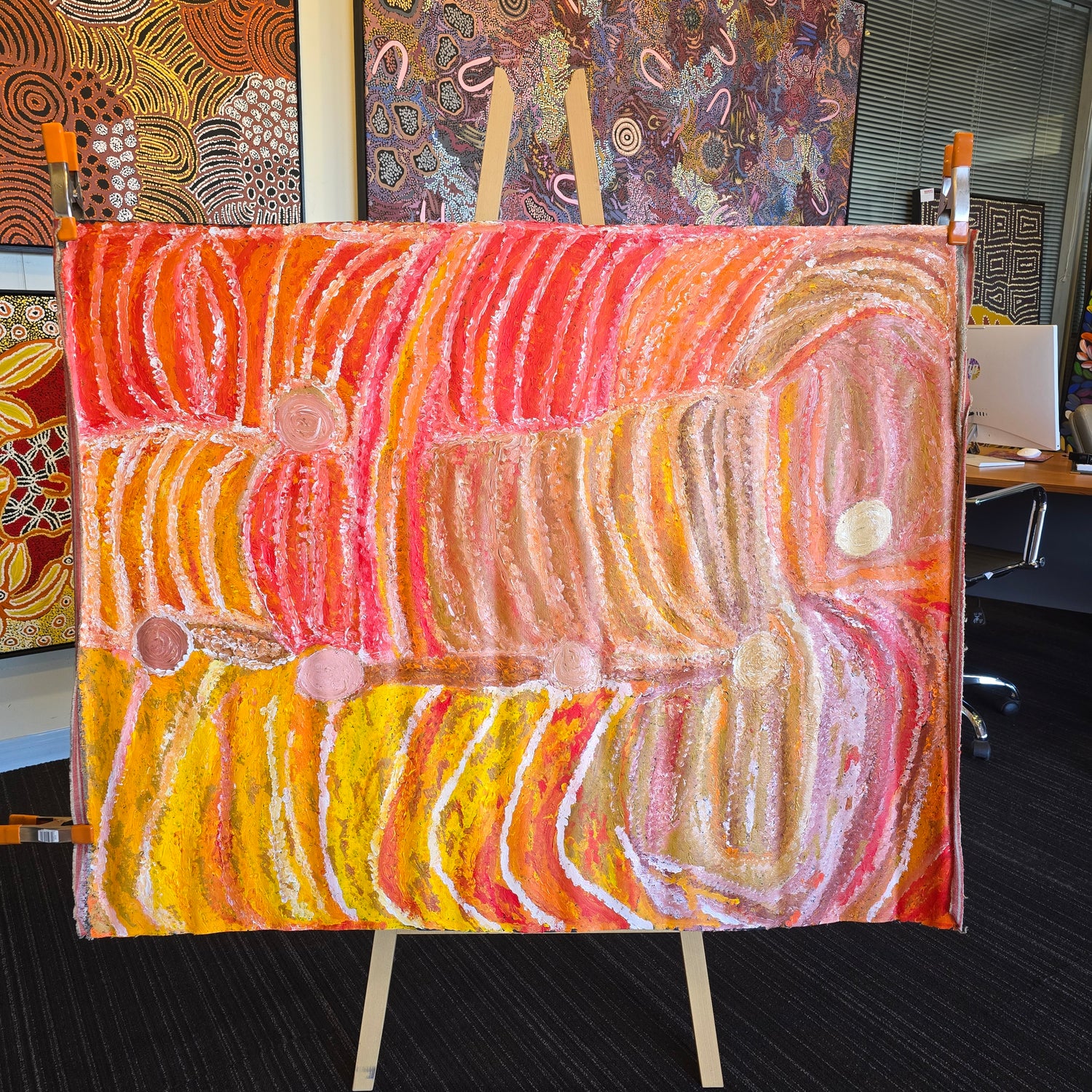
Artistic Career
Eubena began painting in the 1980s when the Balgo art movement was emerging. Her artistic career truly flourished in the 1990s when she became one of the leading artists at Warlayirti Artists, the community art center in Balgo.
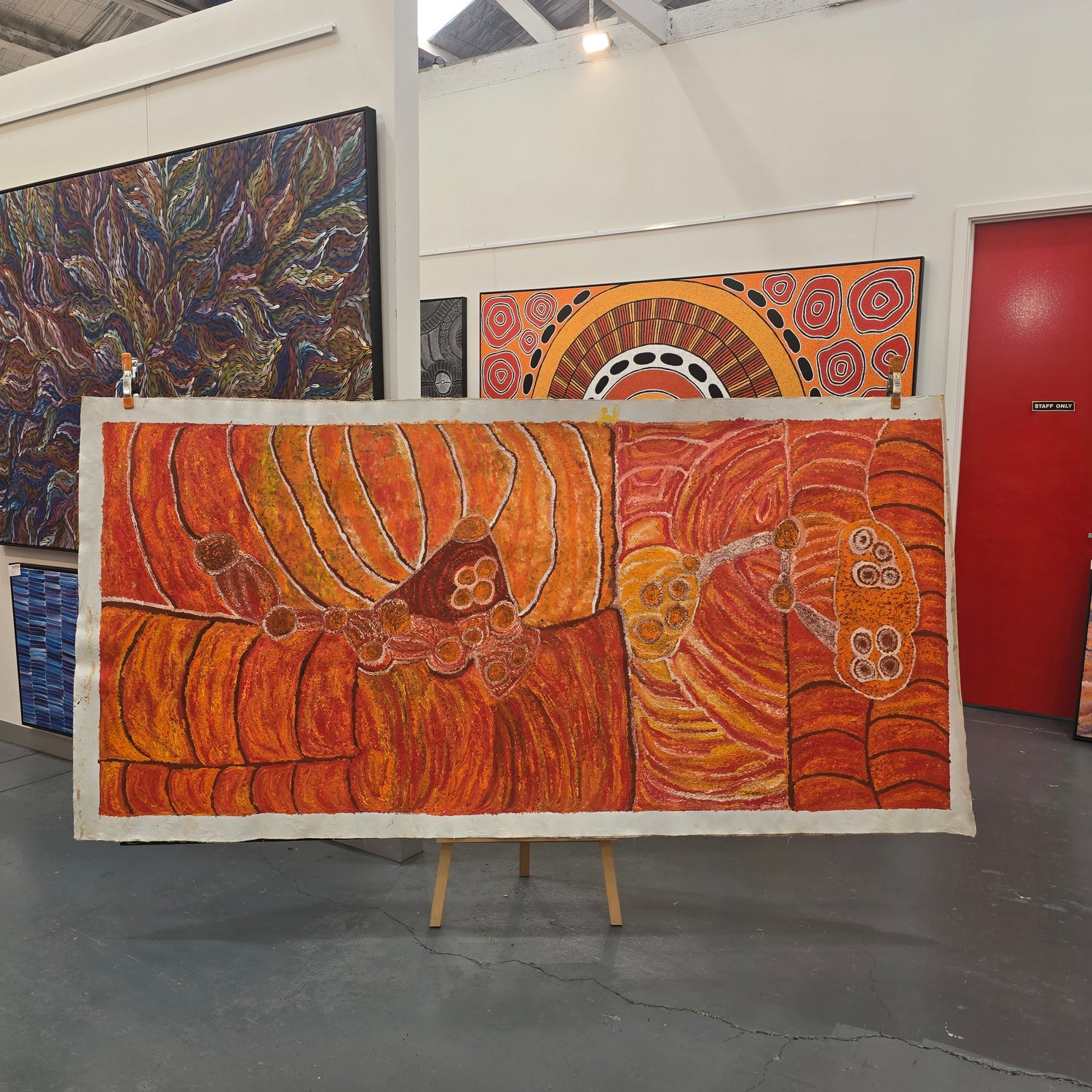
Eubena’s art became one of the most individualistic trends in the sphere of contemporary Aboriginal art. Her mastery of color began to become an identifiable series of her work especially the use of warm hues. Formerly dealing primarily with pinks, oranges, and yellows she painted lively works which stimulated the eye and the soul. These warm colours were judiciously harmonised with warmer ones, thereby producing a balance but in tandem that was dramatic; hence her specialties.
Nampitjin's art style stayed very traditional and true to her Aboriginality and relationship to her Country. Her canvases painted beautiful mappings of indigenous territories as they reflected the small shifts in the geography and the position of important places. Her paintings included women’s ceremonial grounds and sacred sites, but she painted them with respect, using the permission granted by Aboriginal people. She had an uncanny talent for capturing the religious and tangible qualities of her birth region, the desert.
Themes and Techniques
Eubena expanded her technique to fine art and was among the first artists of her time to come up with a technical approach to her paintings. She developed a unique dotting method over several years of experimentation and was able to produce an intricate dotting pattern that when viewed from a distance looks like an illusion. Using paint she built layers and applied them very tactfully to create art that was visually rich as well as physically. This layering process was gradually sharpened throughout her work so that she became able to produce works of such high complexity of feminine emotions and moods.
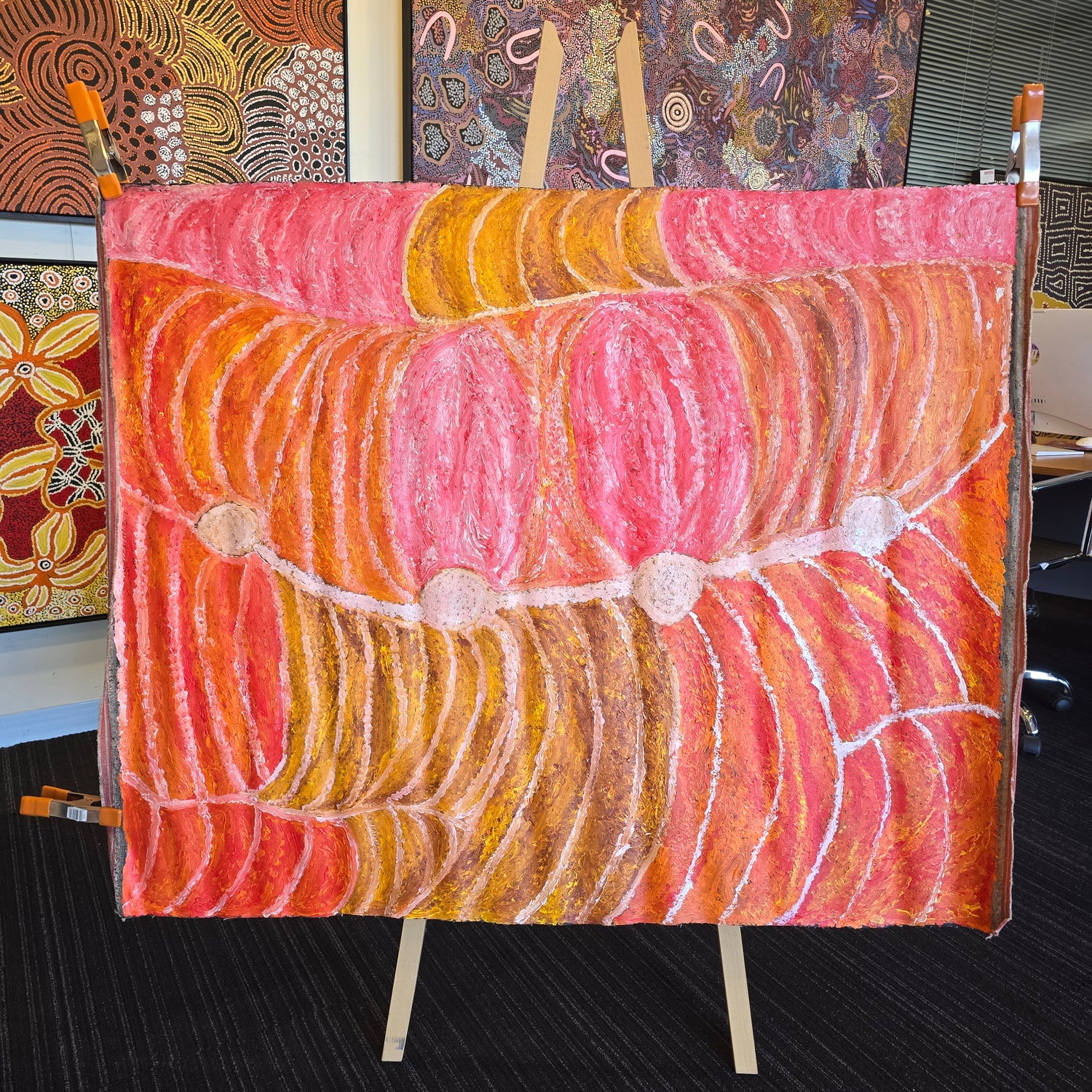
Her knowledge of art symbolism of the past was extensive and played a major role in her artworks but she invested those symbols with a modern outlook. As an outcome, the production reflected conventional Aboriginal art techniques infused with non-conventional artistic sensibilities to craft art that was easily understandable and relatable to the Aboriginals as well as others. Her creativity made it possible for her to represent the difficult Dreamtime stories as well as the cultural values of the people.
Cultural Contribution
Eubena was not only a prominent artist but also a significant cultural figure of the Aboriginal people. She was responsible for the transmission of knowledge of cultural beliefs from one generation to the next as an artist and educator. Her work can be considered as a transition between the Aboriginal pre-modern art practice and the modern Aboriginal art in Australia.
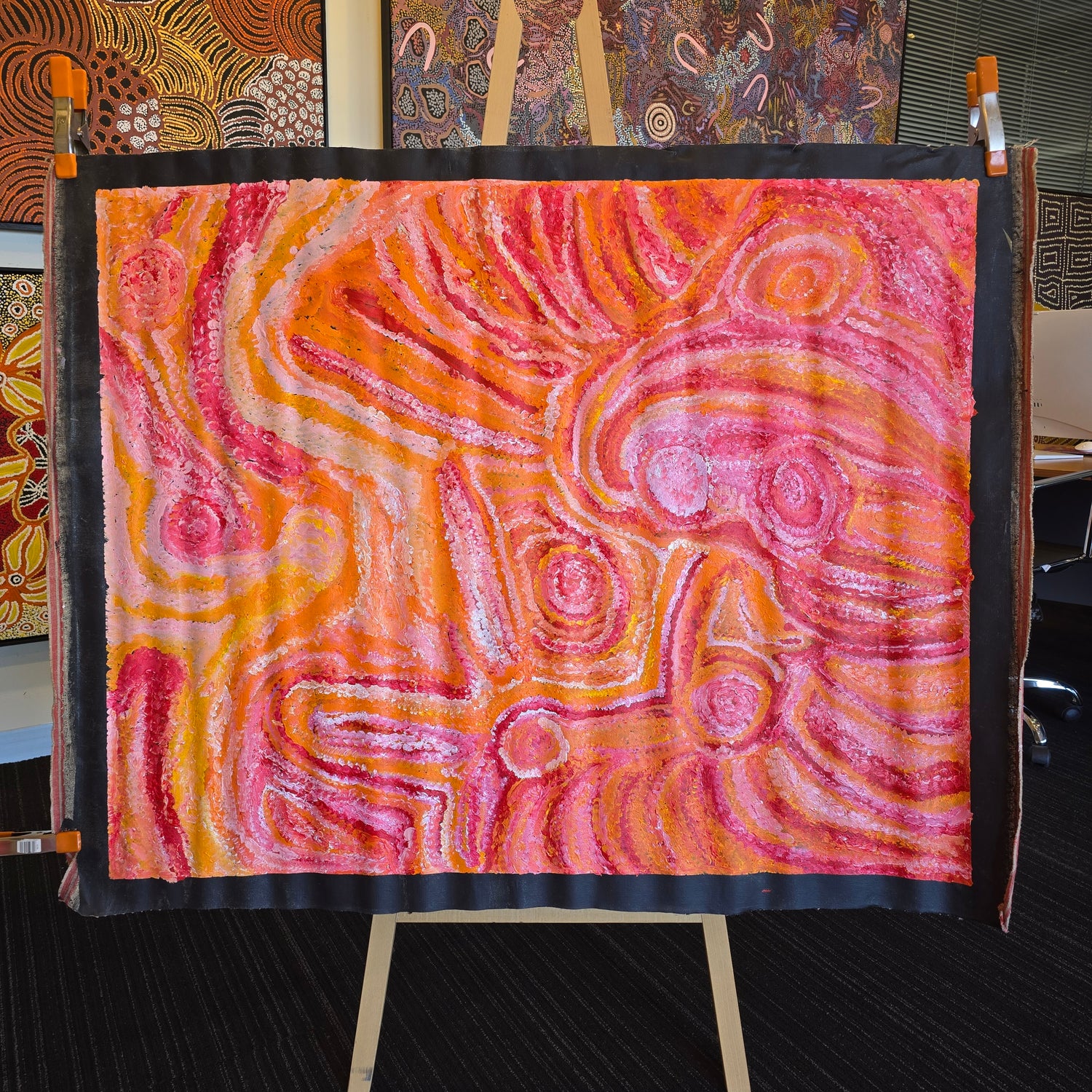
Eubena, as an Indigenous woman practising cultural art, symbolised the link between culture, arts, and its maintenance. She was also engrossed in senior cultural mentoring for women's businesses, including the ceremony and customary practice in Balgo. Her role meant she could contribute to the education of the young people especially in production and knowledge of traditions.
With her influence going further than what immediately was her community, she focused on cultural tourism where she developed cultural interpreters that allowed people from different cultural backgrounds to get to know each other while still respecting the boundaries of the secret knowledge belonging to some of the spirituality. She was wise and cautious when discharging this duty, disclosing what could be disclosed and concealing what could not.
Legacy
Eubena Nampitjin is to this day one of the most famous and significant artists to come out of the Balgo movement. The original paintings she made remain to this date very much sought after, and they may be on a piece of paper but represent an important record of Aboriginal people and their relation to Country. The steps of her creative development can be traced in the works of the subsequent generations of the aboriginal artists especially in the Balgo region.
Her life and work are also testimony to her ability to take traditional Aboriginal culture and apply that knowledge to the present to maintain and educate others about Aboriginal culture as well as produce stellar art pieces.
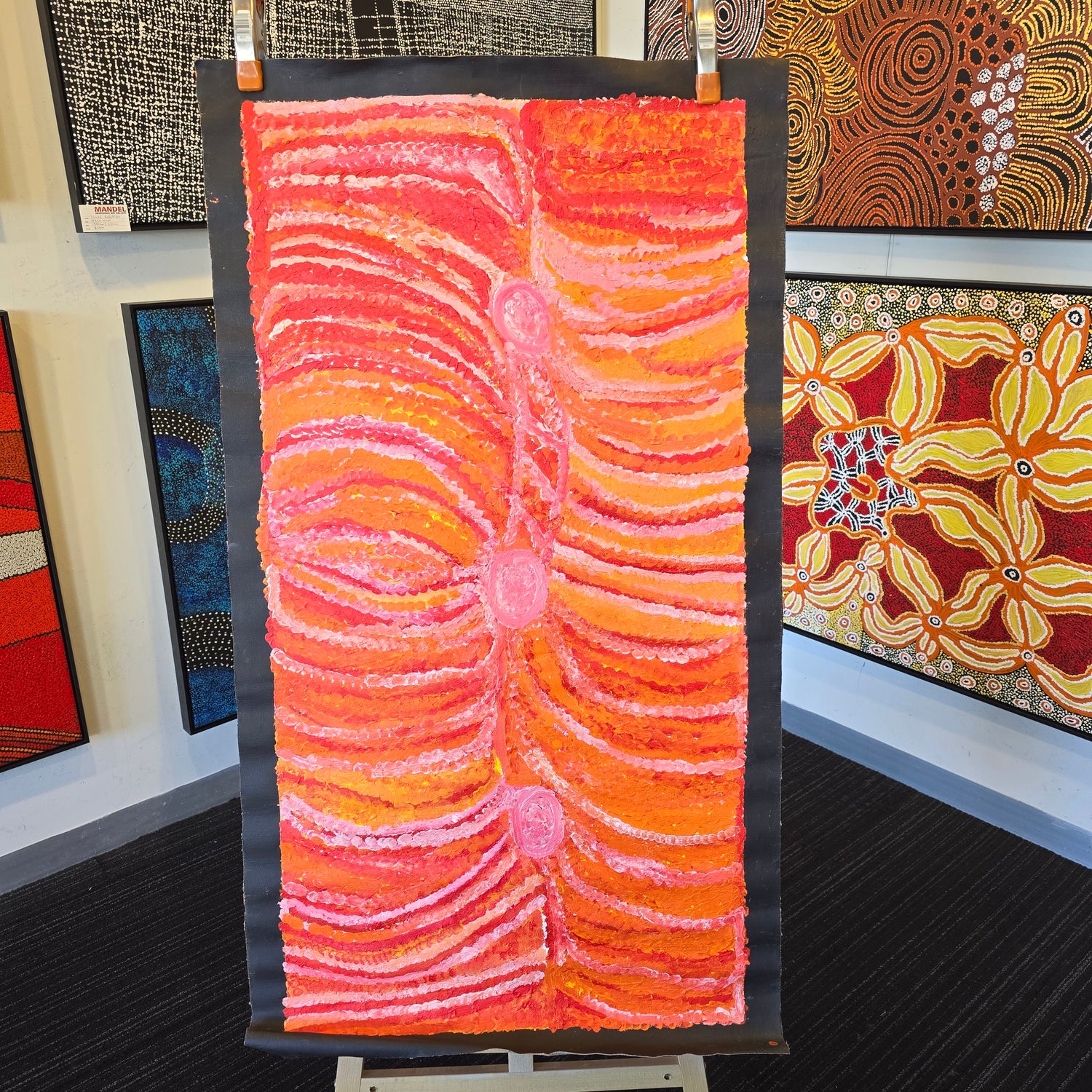
Final Years
Eubena continued painting well into her later years, maintaining an active artistic practice until shortly before her passing in 2013. Her death marked the end of an era for both the Balgo community and Australian Aboriginal art, but her influence continues through her artworks, which stand as powerful documents of Aboriginal culture and connection to Country.
Her life's work demonstrates how traditional knowledge can be preserved and shared through contemporary artistic expression, creating a lasting bridge between ancient cultural practices and modern artistic achievement.
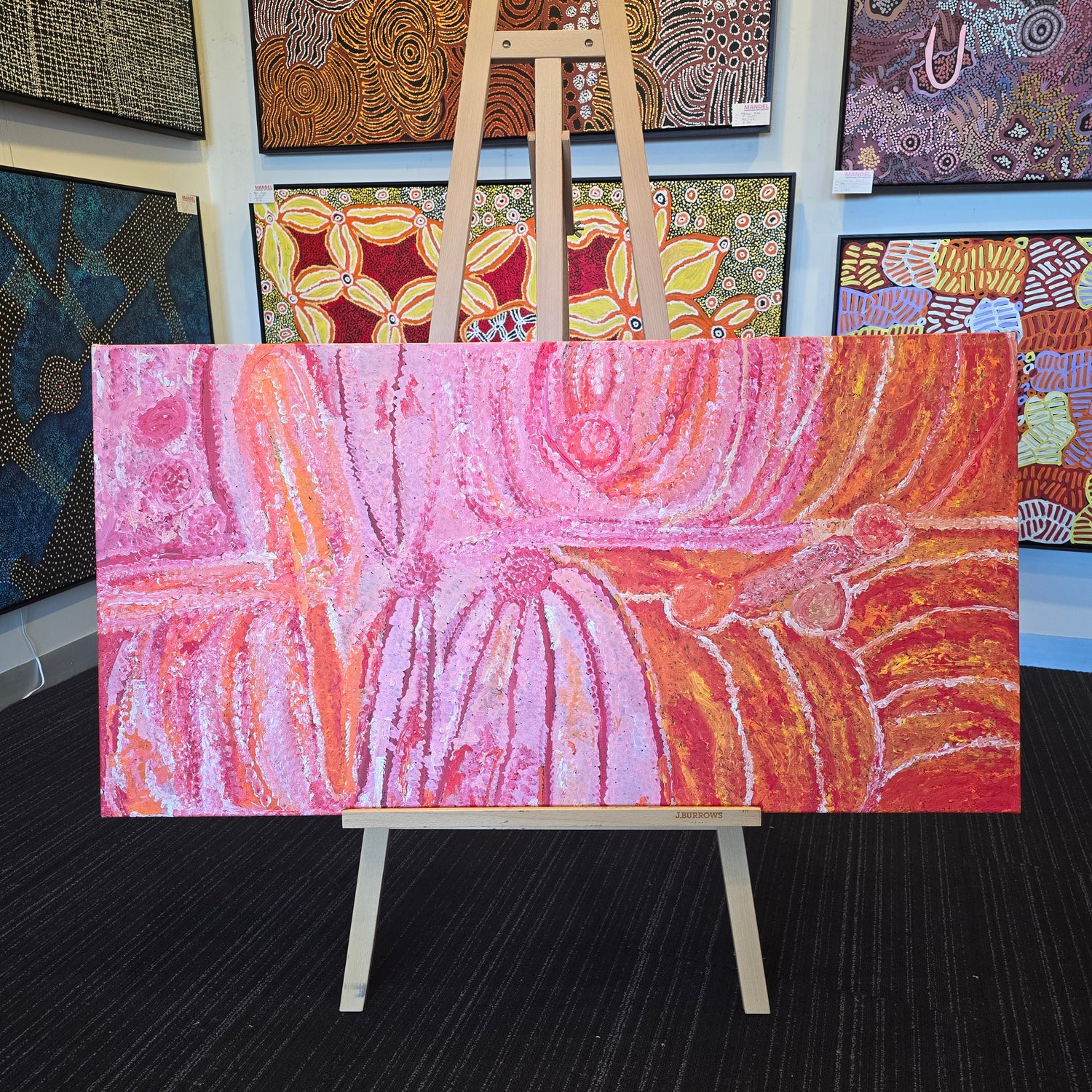
Eubena Nampitjin’s View with Mandel
Step into the extraordinary world of Eubena Nampitjin, where ancient dreamtime stories dance across the canvas in radiant pinks and golds. As one of Australia's most celebrated Aboriginal artists, her masterpieces offer a rare glimpse into the spiritual heart of the Great Sandy Desert.
Visit Mandel Aboriginal Art Gallery to witness the power of her work in person. Call us at 03 9497 5111 or contact our website to experience her legacy. Connect with a piece of Australia's living cultural heritage.









